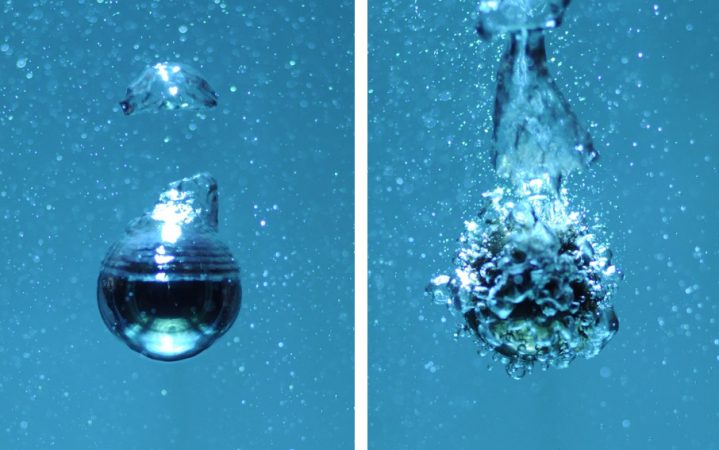Tiny bubbles, be gone
The right surface can determine how water boils

Eventually, that watched pot will boil. But before it does, the water will seem to get excited. The tiny bubbles that form on the bottom of the pot will float up to the surface and pop. Then more bubbles will form, and more and more — until they look like jets of miniature pearls racing to the water’s surface. Those bubbles form when the pot sizzles enough to turn water into steam — but before the water itself is hot enough to boil.
Now scientists have found a way to boil water without those initial tiny bubbles. In a study published in September, chemists show that those bubbles don’t form on a hot surface that’s been covered in a special, water-hating chemical. The scientists also didn’t use a hot pot — they used a hot, steel sphere.
When an ordinary steel sphere is heated to a scorching temperature and plunged into a container of water, an explosion of tiny bubbles surrounds the sphere and churns the water. In the new experiment, an international team of chemists coated a steel sphere with a product called Glaco Mirror Coat Zero. It keeps water from sticking to a surface, in this case the sphere.
On a treated surface, this chemical causes water droplets to bounce away like miniature basketballs. In fact, it creates a water-repellant barrier. When looked at under a microscope, that barrier resembles a vast mountain range with sharp peaks and deep valleys.
That roughness was just what the scientists needed to build a nonbubbling boil-maker. When they added the rough water-resistant coating to the sphere, its surface became covered by deep grooves. Later, when it was heated and then plunged into cooler water, those grooves trapped the vapor that would have bubbled away from an ordinary, smooth surface.
The researchers noted that the water eventually boiled, churning up big gurgling bubbles. It just failed — in the pre-boil stage — to make all those tiny bubbles reminiscent of the carbonation in soft drinks.
The chemists also coated the same type of metal sphere with chemicals that attract water. When heated and dropped into cooler water, those spheres emitted constant streams of tiny bubbles as they cooled.
Controlling tiny-bubble formation could point to new ways to help ships race through water with less resistance. Such coatings might also offer ways to prevent potentially dangerous explosions in the laboratory.
Power Words
water vapor Water in its gaseous state, capable of being suspended in the air.
boil To heat a liquid to the temperature at which it turns to vapor.
chemistry The branch of science that deals with the identification of chemical elements and how and why they combine to form new materials. Also, the science of the composition, structure and properties of chemicals — and the likelihood they will react with one another.







